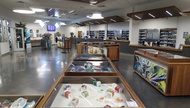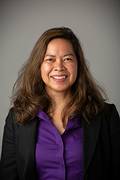One of the biggest impacts for children distance learning this fall will be losing the social interaction that school provides. It’s especially true for younger children, who learn how to navigate the world beyond their family unit through early interactions with peers. Learning the basics of math and reading is important, but in those formative years, the social element is just as critical to children’s development.
The New School
- Questions abound as most Las Vegans return to school at home
- How can we maximize children’s chances for remote-learning success?
- What should we do when students exhibit signs of depression over their social isolation?
- Can students replace the social aspects of in-person school?
- What does school spirit look like without athletics or in-person extracurriculars?
- Might online instruction widen the learning gap?
- What do Southern Nevada’s colleges have planned for fall instruction?
- How will the college admissions process be impacted this fall?
There are metrics to measure academic achievement—or its drop-off—as a result of the pandemic, but the effects of social distancing are harder to quantify, and it’s something with which parents will continue grappling when school begins. For Henderson mom Alexa Sullivan, telling her 6-year-old son and 3-year-old daughter why they can’t be with their friends freely is an emotional undertaking. “I never thought that if I said no to something, their first reaction was going to be, ‘Why? Because of COVID? Because everybody’s sick?’”
Explaining to her son, who’s starting first grade this year, why he’s not going back to regular school was also another difficult conversation, Sullivan says. “I [had to tell him], ‘You know, I understand that those things are sad, but this is the only way Mommy can ensure that your education is getting disrupted the least.’”
For now, Sullivan has cobbled together a small social network that she trusts to be doing the same things and making the same choices as her family when it comes to staying safe. “Having some of his friends come over once a week—we do a science project or an art project, [while] those moms get a little bit of a break—is really our best bet at this point.”
Ashley Howson, mother to two girls, in third and fifth grade, is also taking the small-circle approach to socialization. “We are very fortunate to have some really great friends and some great support,” she says. “With the people that we’re comfortable with, we’ve started to integrate in small groups, maybe one family at a time. We’re just keeping it limited.”
When the school year’s in full swing, Howson plans to deepen those social relationships and create a kind of support network for parents, who will no doubt be overwhelmed juggling work and schooling. “[The kids] do group FaceTime with some of their friends that they’re not able to see, and then we have activities that the kids like to do,” she says. “[We’re] just trying to keep those things going, so that they are still getting interaction with other people and learning social etiquette.”





